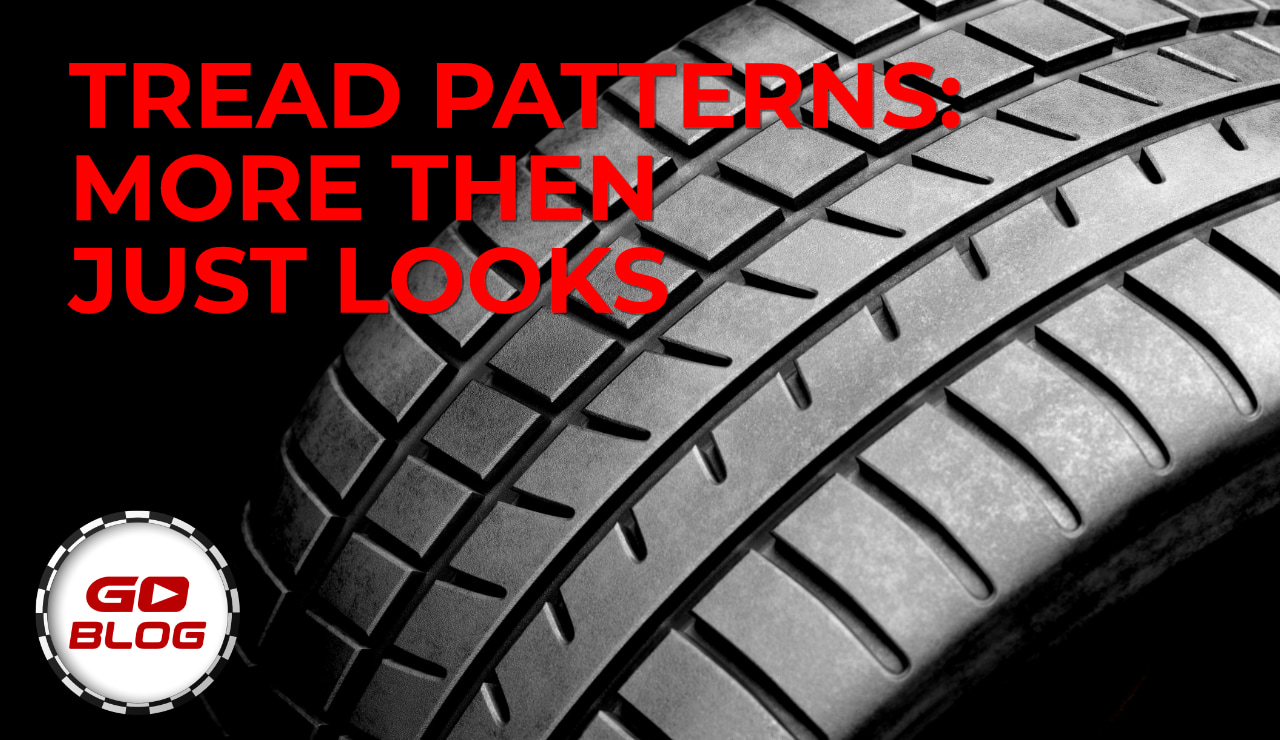The Science of Tire Tread Patterns: More Than Meets the Eye
Posted by WheelSetGo on 21st Sep 2023

The Science of Tire Tread Patterns: More Than Meets the Eye
When it comes to tires, one of the most noticeable features is the tread pattern. But have you ever wondered why different tires have varied tread designs? The science behind tire tread patterns is both fascinating and functional. Let's delve deeper into the engineering and purpose behind these designs.
Why Tread Patterns Matter
Tire tread patterns play a crucial role in:
- Providing grip and traction.
- Channeling water to prevent hydroplaning.
- Reducing noise.
- Enhancing handling and braking.
Tire Composition and Manufacturing
The tire tread is made from a mix of rubbers, both natural and synthetic. When a tire is first assembled, it is completely smooth. The treading is added in a curing machine, which molds and marks the traction patterns. This machine also bonds the different parts of a tire together, ensuring durability and performance.
Types of Tread Patterns
Symmetric Tread Patterns:

- Consistent design across the entire face of the tire, with both halves mirroring each other.
- Most common type found on passenger cars.
- Features continuous ribs or independent tread blocks.
- Offers a smooth and quiet ride with even tread wear.
Asymmetric Tread Patterns:

- Varied design across the face of the tire, with larger tread blocks on the outer portion for increased cornering stability and smaller inner blocks for traction and water dispersion.
- Different tread patterns on the inner and outer sides.
- Designed to offer a blend of wet and dry performance.
- Often found on sports cars and high-performance vehicles.
Directional (or Unidirectional) Tread Patterns:

- V-shaped tread pattern.
- Excellent water dispersion, reducing the risk of hydroplaning.
- Designed to roll in only one direction.
Trade-offs in Tread Design
The best dry braking tire is a slick tire with no grooves or sipes, which is why racers use “slicks” in competition. However, such a tire is not suitable for snowy roads. Tread patterns designed for wet conditions have high void concepts (large grooves) for water evacuation, which can reduce dry braking performance due to a reduced contact patch.
The Role of Tread Depth
Tread depth is as crucial as the pattern itself. A deeper tread means more grip, especially in wet conditions. However, as the tire wears down, its ability to disperse water decreases, increasing the risk of hydroplaning.
Tread Patterns and Noise
The arrangement and size of tread blocks can influence tire noise. Manufacturers often use computer simulations to design treads that reduce noise levels, leading to a quieter ride. The number of pitches, sequencing the tread pattern pitches, and the position of different grooves also play a role in noise performance and wear patterns.
Specialized Tread Patterns
Winter Tires: Feature deeper grooves and sharp, jagged tread blocks to grip snowy and icy roads.
Off-Road Tires: Have aggressive, large tread blocks to provide maximum traction on uneven terrains.
Racing Tires: Often have minimal tread patterns to maximize the contact patch with the road.
Modern Tire Engineering
With the availability of supercomputers, tire engineers can develop tread patterns, model the tire, and predict its performance before ordering any tooling. This process has halved the time it takes to bring tires to the market compared to a decade ago.
The Myth of the Perfect Tire
It's a common misconception that there exists a single "perfect" tire suitable for all conditions and purposes. In reality, tire design is a delicate balance of trade-offs, tailored to specific driving conditions, terrains, and performance requirements.
- Diverse Driving Conditions: From scorching highways in the summer to icy roads in the winter, tires face a wide range of driving conditions. A tire optimized for wet conditions with deep grooves for water dispersion might not offer the best dry braking performance due to a reduced contact patch.
- Varied Terrains: While a smooth tread pattern might be ideal for highway driving, it won't fare well on muddy off-road trails. Conversely, the aggressive tread of off-road tires would be noisy and less efficient on highways.
- Performance vs. Longevity: High-performance tires, often seen on sports cars, provide excellent grip and handling but might wear out faster than harder compounds designed for longevity.
- Fuel Efficiency and Noise: Some tires are designed for fuel efficiency by reducing rolling resistance. However, these might not be as quiet as tires specifically designed to reduce road noise.
- Cost Considerations: Ultra-high-performance tires with specialized compounds might offer exceptional performance but come at a premium price. On the other hand, budget tires might not deliver the same level of performance but are more affordable for everyday use.
Choosing the Right Tire: The key is to understand your driving habits, the conditions you most often encounter, and what you prioritize most (e.g., performance, longevity, comfort). Consulting with tire experts and doing thorough research can guide you to a tire that's "perfect" for your specific needs, even if it's not universally perfect for all.
Final Thoughts
The science behind tire tread patterns is a blend of engineering and real-world testing. The next time you're in the market for new tires, take a moment to appreciate the intricate designs and the technology that ensures you stay safe on the road.
If you're looking for mounted and balanced wheel and tire packages tailored to your needs, WheelSetGo is here to assist. Our experts can guide you to the perfect set for your vehicle, ensuring optimal performance and safety. Give us a call at 320-247-6160 and let's find the best wheel and tire package for you!
